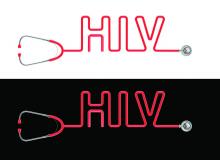Antiretroviral therapy (ART) for HIV is critical for achieving viral suppression, which improves the health and longevity of people living with infection and dramatically reduces the risk of transmitting HIV to others. Despite these clear benefits, not everyone prescribed ART adheres to their medications, which can result in drug resistance – and transmission of drug-resistant HIV to others.
In order to identify an effective drug regimen and thereby prevent the further development and spread of HIV drug resistance, resistance must be identified before ART is initiated.A Centers for Disease Control and Prevention analysis of eight U.S. cities found that more than 18 percent of 13,393 people with a recent HIV diagnosis had infections that were resistant to at least one form of treatment. Since 2007, the U.S. Department of Health & Human Services has recommended that everyone with diagnosed HIV infection be tested for drug resistance when HIV care begins; however, it’s not known how closely HIV care providers in the United States follow the guidelines.
To learn more, the CDC recently analyzed HIV surveillance data to examine testing patterns among people living with diagnosed HIV who had entered HIV medical care. The results of the study, published in AIDS Care (2017 May. doi: 10.1080/09540121.2017.1316356), indicated that, of the people with HIV diagnosed in 2013 who had entered medical care, only 66% had been tested for resistance. Of those tested, 68% received testing at the beginning of care.
The findings also show that resistance testing is performed less often among certain groups, including males who inject drugs. In recent reports, about a third of people who inject drugs in selected U.S. cities indicated they did not have health insurance, and nearly 80% lived at or below the federal poverty level. Lack of health care access and low socioeconomic status may be potential barriers to receiving medical care and laboratory testing. Additionally, this population might not be aware of available resources that support these services, including those provided through the Ryan White HIV/AIDS Program and federally qualified health centers.
Previous research has also shown that non-HIV specialists are less likely than HIV specialists to order resistance testing for their patients. With potentially more injection drug use and fewer specialist health care services available in less-populated communities, there is an urgent need both to improve HIV testing and increase resistance testing in rural communities. This is important given the growing potential for HIV outbreaks among people who inject drugs, as well as the substantial rise in the number of deaths attributed to opioid use in many communities throughout the nation.
The study findings also indicate that resistance testing is less common among people with higher CD4 counts in some states, including Michigan, New York, and Texas. CD4 cells are a type of white blood cell that helps in protecting the body from infections, but they are also targeted by HIV. CD4 cell counts can be used to determine the stage of HIV infection in a person. As HIV stays in the body longer, CD4 cells decrease. Even if treatment is delayed for a medical reason, such as coinfection with tuberculosis, resistance testing should still be conducted at a person’s entry to care to help ensure treatment success later.
These results have strong implications for clinical practice and management of people with newly diagnosed HIV. More research is needed to identify the factors influencing lacking or delayed resistance testing so that we can address differences in the development of resistance, as well as other clinical outcomes, over time.
Dr. Dasgupta is affiliated with the Division of HIV/AIDS Prevention at the Centers for Disease Control and Prevention.


